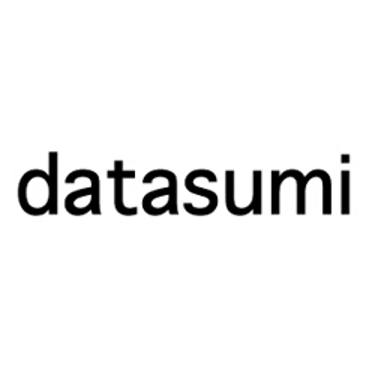Community Building and Collaboration with AI
Discover how AI is transforming community building and collaboration. Explore top AI-powered tools, ethical considerations, and future trends shaping creative and productive online interactions. Learn how to build thriving communities and enhance collaboration with AI.


Imagine a world where creativity knows no bounds, and collaboration is as seamless as a click. Welcome to the era of AI-powered creative community building and collaboration. This isn't just about enhancing productivity; it's about fostering a vibrant ecosystem where ideas flourish, connections deepen, and innovation thrives. In this article, we'll explore the transformative impact of AI on community building and collaboration, delve into the tools and platforms revolutionizing this space, and discuss the ethical considerations that come with this technological leap.
The Evolution of Community Building with AI
Community building has always been about fostering connections and nurturing a sense of belonging. With the advent of AI, this process has taken on a new dimension. AI-powered community platforms are redefining how we engage, collaborate, and create. These platforms offer personalized experiences, automate routine tasks, and facilitate smarter engagement, allowing community managers to focus on the creative and empathetic aspects of community building1.
Consider platforms like Disco AI, Circle, and Mighty Networks. These tools are not just about creating a digital space for interactions; they are about building a thriving community where knowledge and creativity flourish. For instance, Glue Up's AI Co-Pilot feature simplifies community management and event organization, empowering leaders to build stronger, more connected networks1.
The Role of AI in Enhancing Collaboration
Collaboration is the lifeblood of creativity, and AI is making it more efficient and effective than ever before. AI-powered collaboration tools are designed to streamline workflows, enhance communication, and foster innovation. Tools like ClickUp's Whiteboards and Mind Maps allow teams to collaborate visually, bringing ideas to life with features like multi-color pens, sticky notes, and shapes2.
Moreover, AI can summarize lengthy conversations and calls, identify key collaborators, and streamline communications, saving time and enhancing productivity2. Confluence, integrated with Atlassian Intelligence, takes collaboration to the next level by organizing information and automating tasks, making it easier to move work forward2.
Ethical Considerations in AI-Powered Communities
While the potential of AI in community building and collaboration is immense, it also raises important ethical considerations. Building community-led AI governance is crucial to ensure that these technologies serve humanity and the planet. This involves supporting cooperative, collective, and collaborative structures that promote justice, equity, and shared prosperity3.
Ethical AI governance goes beyond defending against AI's harms; it reimagines how we live together and care for each other, implementing creative AI applications that realize these visions. Long-term, unrestricted investments in cooperatives, communities, and collaborative networks are essential to build an ecosystem that values access, justice, and responsible innovation3.
The Future of AI in Creative Collaboration
The future of AI in creative collaboration is promising. Generative AI technologies are already enabling people to collaborate with AI to produce creative works. Studies have shown that the design of generative AI systems can influence human creativity, with AI exhibiting human-like levels of creativity in narrow domains4.
Tools like Superads empower marketers and creatives to understand what their target audience likes, bridging the gap between creative and marketing teams5. The AICC, for instance, fosters innovation in content creation, audience analysis, and enhanced digital experiences, helping creators push boundaries and reach broader audiences6.
Building AI-Powered Communities for Social Impact
AI-powered systems have the potential to engage local communities in developing solutions for pressing societal and environmental concerns. Developing new collaboration approaches and mindsets is essential to co-create AI-powered systems in multi-stakeholder contexts. This involves building an enabling environment that supports an ecosystem of advocates, creatives, and practitioners who can drive the AI sector toward justice, equity, and shared prosperity7.
However, challenges such as power dynamics and trust issues need to be addressed to ensure that AI systems are co-designed with local communities and adapted to long-term social change7.
Conclusion
The intersection of AI and community engagement is a fertile ground for innovation. From enhancing creativity to fostering deeper connections, AI is revolutionizing how we build and collaborate within communities. As we embrace this technology, it's crucial to ensure that it serves the greater good, promoting justice, equity, and shared prosperity. The future of community building and collaboration is here, and it's powered by AI.
FAQ Section
Q: What are AI-powered community platforms?
A: AI-powered community platforms are digital spaces that use artificial intelligence to enhance user experience, automate tasks, and facilitate smarter engagement. Examples include Disco AI, Circle, and Mighty Networks.
Q: How does AI enhance collaboration?
A: AI enhances collaboration by streamlining workflows, automating routine tasks, and improving communication. Tools like ClickUp's Whiteboards and Mind Maps, and Confluence integrated with Atlassian Intelligence, are examples of AI-powered collaboration tools.
Q: What are the ethical considerations in using AI for community building?
A: Ethical considerations include ensuring that AI serves humanity and the planet, promoting justice, equity, and shared prosperity, and addressing power dynamics and trust issues.
Q: How can AI be used for social impact in communities?
A: AI can engage local communities in developing solutions for societal and environmental concerns. This involves building an enabling environment that supports an ecosystem of advocates, creatives, and practitioners.
Q: What are some tools that bridge the gap between creative and marketing teams?
A: Tools like Superads empower marketers and creatives to understand audience preferences, bridging the gap between creative and marketing teams.
Q: How does AI influence human creativity?
A: AI, particularly generative AI, can influence human creativity by exhibiting human-like levels of creativity in narrow domains and augmenting human creative processes.
Q: What is the role of AI in content creation and audience analysis?
A: AI fosters innovation in content creation and audience analysis, helping creators push boundaries and reach broader audiences. The AICC is an example of an initiative that empowers digital and creative industries with AI.
Q: How can AI-powered systems address local concerns?
A: AI-powered systems can address local concerns by co-creating solutions with local communities, collecting community data to fine-tune AI models, and adapting AI behavior to long-term social change.
Q: What are some challenges in co-designing AI systems with local communities?
A: Challenges include power dynamics, trust issues, and conflicts of interest among multiple stakeholders. Addressing these challenges is essential for effective co-design of AI systems.
Q: How can AI transform community governance?
A: AI can transform community governance by supporting cooperative, collective, and collaborative structures that promote justice, equity, and shared prosperity. This involves long-term investments in cooperatives, communities, and collaborative networks.
Additional Resources
For readers interested in exploring AI-powered creative community building and collaboration further, here are some reliable sources and further reading materials:
The Learning Community Playbook - A resource that delivers actionable insights, innovative frameworks, and valuable strategies to spark engagement, nurture growth, and foster deeper connections8.
Collaboration.AI - A platform that uses artificial intelligence to improve performance, productivity, and engagement for businesses, schools, and organizations9.
AICC - The Artificial Intelligence Collaboration Centre aims to drive innovation and collaboration in AI, fostering innovation in content creation, audience analysis, and enhanced digital experiences10.
Author Bio
Alexandra Thompson is a digital strategist and community builder with a passion for leveraging AI to foster creativity and collaboration. With a background in both technology and social sciences, she brings a unique perspective to the intersection of AI and community engagement.
